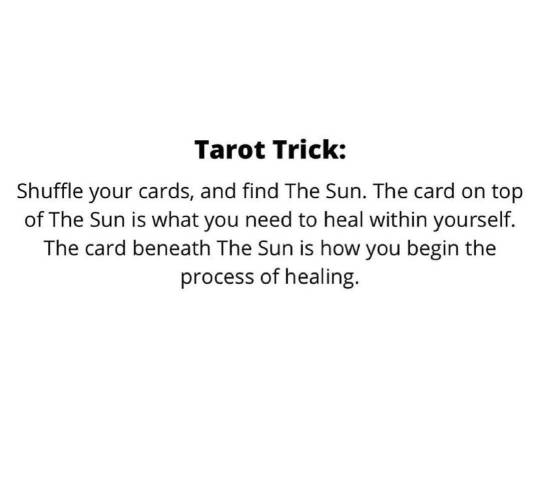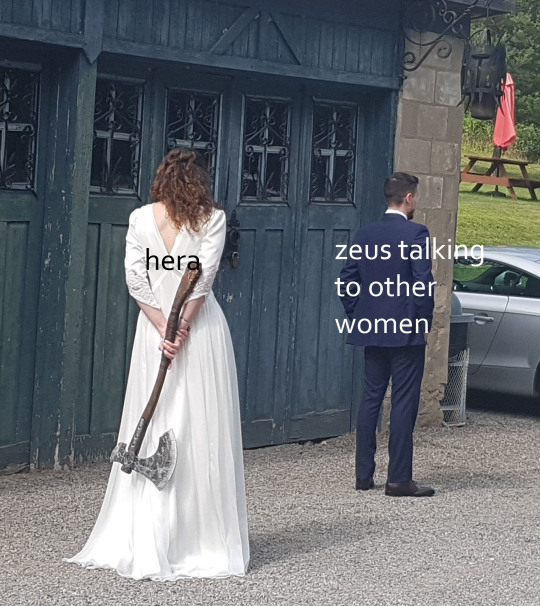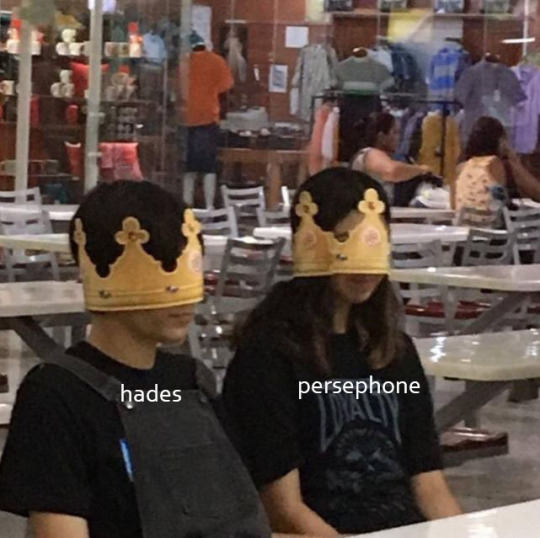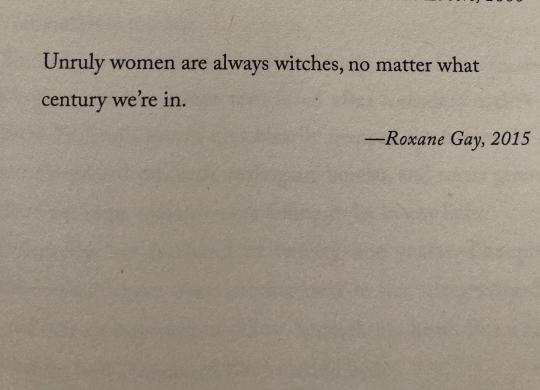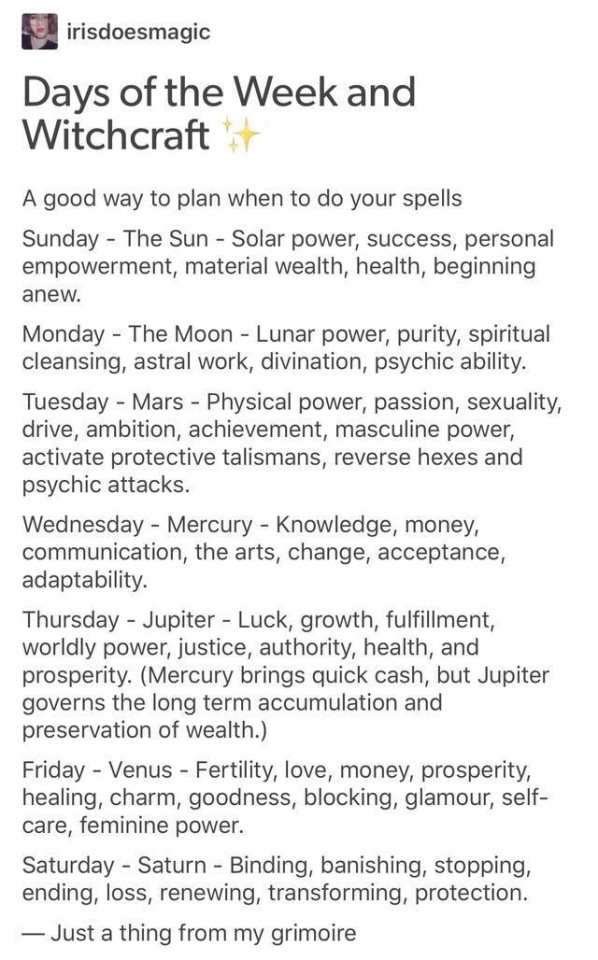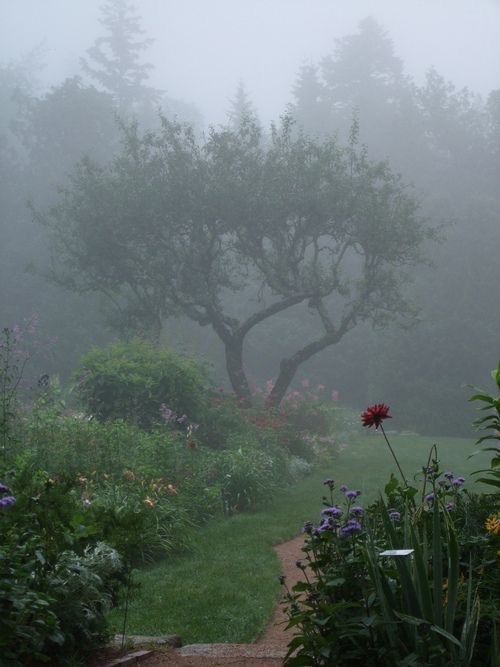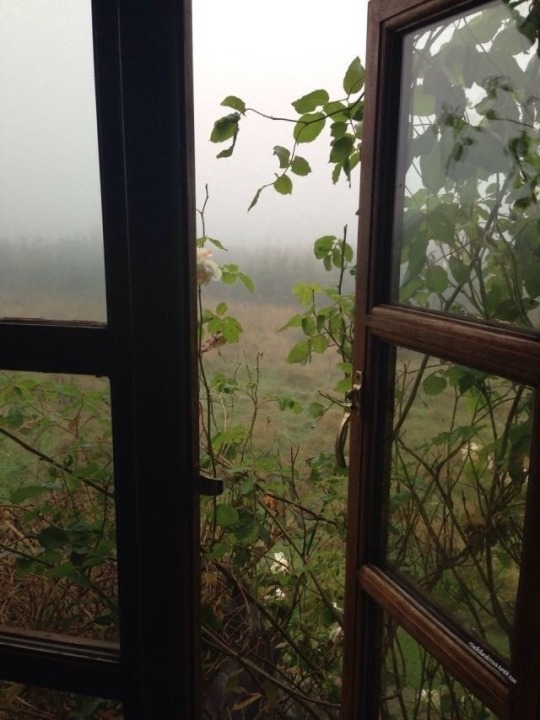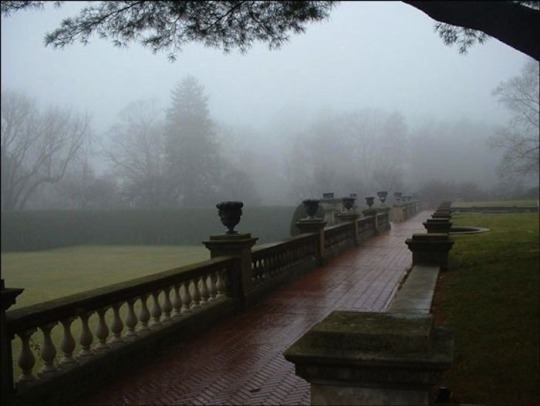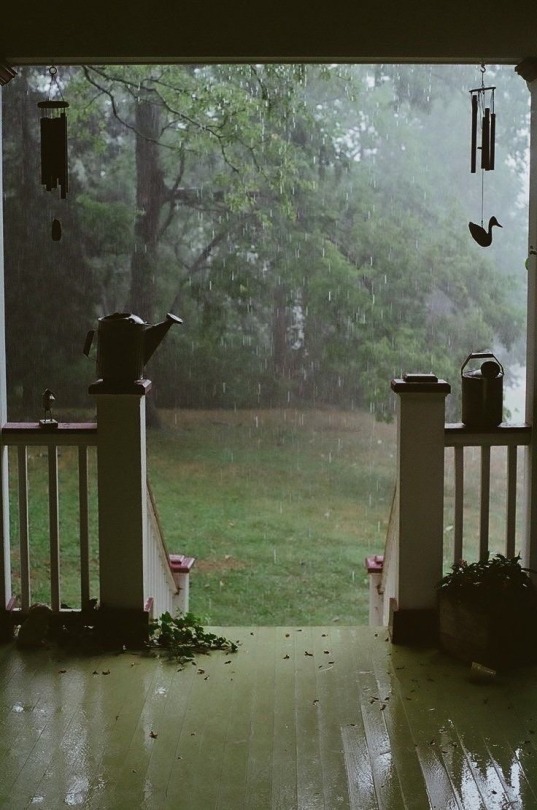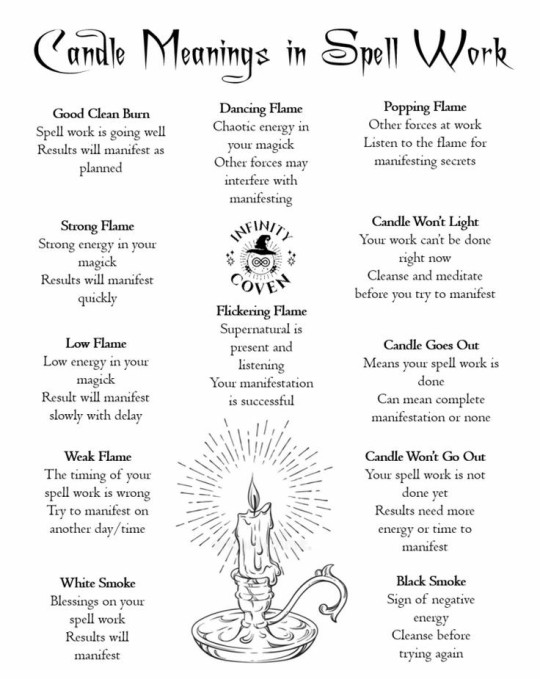Text
The gods will be clear when reaching out to you during divination. When you ask for signs during a tarot session, you should get clear signs. You might have a little trouble with interpretation, which is very normal, but the sign itself should be objectively clear. You might just need to look a little in order to catch it. Clear doesn't mean obvious! Clear just means, yes, this is associated with so-and-so deity.
156 notes
·
View notes
Text
Graveyard Etiquette 101
Graveyard Etiquette 101
What is Cemetery / Graveyard Etiquette?
• Graveyard Etiquette is a term used by pagans/witches/spiritualists, and even those who do not subscribe to those beliefs, regarding how to behave and act within a graveyard or cemetery. Some of these beliefs regarding graveyard etiquette surround respect of others, the deceased in the graveyard, and visitors in a mundane sense. In a spiritual sense this also involves respect of spirits and guardians within the graveyard/cemetery
What is the difference between a Cemetery and a Graveyard, do these rules still apply to both?
• The main difference between a Graveyard and Cemetery is a Graveyard is attached to a church. Specifically, a graveyard is a burial ground which adjoins a church. Meanwhile the word ‘cemetery’ comes from the Greek ‘koimeterion’ which means resting place. Both a graveyard and cemetery are burial grounds for the deceased, the only true difference is a Graveyard adjoins a church and a cemetery does not. This is also important to keep in mind when looking into graveyard vs. cemetery dirt.
• Given these definitions, yes these rules of etiquette apply both to graveyards and cemeteries.
Entering a Graveyard or Cemetery
• Bring offerings for the spirits. Specifically, bring an offering for the gatekeeper/guardians of the cemetery. One of the most common offerings is to bring coins which you would leave at the entrance to the graveyard or cemetery.
• Other offerings include: flowers, herbs, bread, liquor, apples, cleaning up the entrance.
• Do not bring in anything for cleansing or banishment within the cemetery as it can be seen to be rude to the spirits who reside there. Do however enter with personal and spiritual protection on you, preferable a few layers.
• If you work with a deity associated with cemeteries, graveyards, the dead, and/or death you may wish to leave an offering for them at the entrance as well.
What to keep in mind during your stay
• Don’t litter – never leave any garbage in a graveyard/cemetery. If you notice garbage around, please pick it up and dispose of it properly (If safe to do so). Not only is this to keep the grounds clean, but it is a sign of respect for those living and dead within the grounds as well. It can even be seen as an offering to the spirits who reside there.
• Don’t take anything without permission. There is a common saying that “If you take from a graveyard, you’ll leave with more than you took.” Keep this in mind when collecting anything for your spiritual practice from the grounds of a graveyard or cemetery, and never take something from a grave or that was clearly left as an offering.
• Don’t take any pictures of any headstone, graves, or grave markers without consent. If you are unsure if consent was given or were given a clear ‘no’, do not take photos. The same goes for sharing any photos of any graves/headstones/etc. It is also advised to not point at any graves – think of it how it is typically observed to be rude to point your finger at someone, same thing applies here.
• You can clean up a headstone that you visit, this can be as simple as brushing off dirt or dead leaves off the headstone. Remember if you do clean a headstone to not stand on the grave itself, but rather lean from the side. Do not disturb any gifts left by the living if there are any, and feel free to leave something small as a gift if there aren’t. If you so happen to accidentally step on a gravesite, it is best to apologise and say sorry.
• If you wish to leave an offering for all the spirits in the grounds rather than one from a specific gravesite – leave the offering near a central tree and dedicate it to the spirits. This way it is clear it is not meant for one spirit in particular.
Exiting a Graveyard/Cemetery
• It is highly advised in spiritual communities to leave the way you came. Take the exact path you took to get inside the graveyard or cemetery and exit through the same place you entered. If there are other exits it is highly suggested to not exit through them.
• Basically make note of the entrance you took to come in and use the same one on your way out. This is due to a superstition that leaving a different way will allow spirits to follow you home. This is a preventative measure to avoid that happening.
• When you are exiting the graveyard, make sure you are bringing everything you came with (except offerings of course!). This includes garbage, tools, etc. Whatever you leave behind may be claimed by the spirits who reside there as an accidental offerings, and leaving litter is not a kind or respectful thing to do.
• Before you leave it is common practice to give thanks. This will be given to the same guardian you left offerings to on your way in. thank them for doing their job before you go. This is due to the notion that they are the ones to call back anything that may be trying to follow you home.
• Once out of the graveyard then it is recommended to cleanse yourself. If not outside the graveyard, at least before stepping back into your own home. While some practitioners always do a cleanse before stepping foot into their own home.
General Rules to Follow
• If you are visiting a cemetery for witchcraft related reasons, most in the community suggest visiting ‘retired’ cemeteries primarily. These are cemeteries typically 100+ years old that are no longer open to new burials. It is considered respectful to only hang around grave sites where the person was buried at least 100 years prior. This is out of respect for any living relatives, but also to the spirit resting there that no longer has family to visit it. A general rule of thumb is to avoid visiting or working magic near grave sites where the deceased’s family may still visit out of respect for both.
• Do not use mirror within a graveyard or cemetery – this comes out of one of the many superstitions surrounding graveyard and cemeteries. The reason many suggest avoiding the use of mirrors within a graveyard stems from the belief of mirrors being a device that blurs the line between the physical and spiritual world. Mirrors are often used for scrying and communicating with spirits. A mirror has been believed to trap souls and spirits within the glass, causing them to become unable to cross over. This is why you should avoid using mirrors in a graveyard, an also why historically mirrors where covered in homes of the dying or deceased.
• Be respectful of other visitors. It is important to follow the rules outlined by the specific graveyard or cemetery you are visiting, and most of these revolve around showing respect for those also on the grounds. Generally speaking you should keep your volume down, keep control of any children you bring with you, and avoid disturbing others around you. This also goes for spirits within the grounds.
• Speaking of which, you should ‘play nice’ with the spirits within the graveyard. Be kind to them. Graveyard and cemeteries will have a center that all energy will gravitate towards, in essence an energy center. This will be the best place to communicate with spirits as well as to perform any magic you may have been planning to partake in. Be sure to be extra respectful around this area. It is also common practice to leave offerings to the spirits of any gravesite you visit during your stay.
• Do not sit on any headstone. This is due both to respect for the spirit the headstone belongs to, but also for safety reasons. In older cemeteries headstone are old, prone to cracking, and be extremely dangerous to sit or rest on. Be kind to yourself and the spirits there and avoid resting or sitting on any headstone or grave markings.
• It has been seen to be bad luck to wear anything new within a graveyard or cemetery, this especially applies to shoes. It can also be seen as rude to the deceased who reside there.
Some more mundane rules to follow
o do not plant or bury anything
o do not vandalize graves, headstone, or grave markings
o do not disturb mourners or memorial services
o open flames and glass maybe prohibited for safety reasons, this will depend on the cemetery or graveyard. Look up their guidelines in advance if you plan on doing any workings that require this.
o Some cemeteries restrict grave rubbings to better conserve old gravestones.
o Observe the visiting hours. They may not be posted so do your research on this in advance.
o Most practitioners advise not entering or staying in a graveyard past dark as it can be seen as bad luck
Some superstitions regarding graveyards and cemeteries.
O Do not whistle in a graveyard, or your tempt/bring death
o Do not yawn near a grave. It is believed to yawn near the deceased is to welcome them inside your body.
o Smelling roses when there are none in sight has been noted to be a sign of a benevolent spirit nearby.
110 notes
·
View notes
Text
Grimoire - Rituals and Spells

Spellcasting in General:
A Beginners Guide to Spellwork
Methods of Spell Work
Types of Spells & Basic Methods of Casting
How to Cast Spells That Work
How To Create Your Own Spells
Writing your own spells
Definitions: “Intent” and “Will”
To Nullify a Spell
Spells are not simple
Components of a Spell
Major Components in Spells
Tips to avoid negative manifestations of spells
Ideas for your spells
Why Your Spells Don’t Work
Why Your Spells Don’t Work
When Your Spell Fails
Magical Failure: Why wasn’t my spell successful?
Reworking Gendered Energies
“How do spells work if there are so many different spells to cause the same effect?”
Disposing of Spell Materials
On Substitions
There is no Universal Substitute
Substitutions, Reworking & Personalizing Spells
Substituting with “anything” (a quartz and rosemary-inspired rant)
Spell Loopholes
Spell Record Worksheet
Get to Know Your Spell Ingredients
Do Spell Components Matter?
Why Didn't My Spell Work?
Spell Masterposts:
how to write your own spells resources
Simple/"Beginner" Spells
friendship spells
love spells
protection spells
glamour spells
Glamour Spell Masterpost
Valentine’s Day Spells
List of Love Spells
Healing Spells:
Candle Healing Spell
“Mend Your Heart” Spell
Healing & Easing Emotional Pain with “Fire Dust”
"It will be okay" spell
Anxiety-Relief Tea Potion
Mental healing spell
Strength Spell
The Healing Pool: A Cursebreaker
Protection Spells:
Sleeping Beauty House Protection
INSTANT PROTECTION SPELL
Blazing Barrier
Briar Rose Protection Spell
Dragonfire Protection Powder
Beauty/Love/Glamour Spells:
Intro to Glamour
Magic Mirror Beauty Spell
How To - Glamour Spells
Love Spells and Enchantments
Love Spells and Consent: Navigating Romantic Magick
Cleansing + Charging with Love
Wrath’s Charm for Self-Love and Cosmic Love
“Bring me Matches” Rose Spell
glow like the moon
Various Spells:
A Spell to Strengthen Intuition
Spell for Clear Thoughts
Super Casual Mini Spells
Moonstone Spell to Communicate with someone in your sleep
Releasing Spell
Anti Bad Vibes Spray
a spell to make a home cozier
Summon Rain Spell
Fire Writing Spell
banishing spell to break someone’s hold over you
curse alternative
Cord Cutting Spell
Get the Fuck Out Room Spray
Siren Song Shell Charm
Bad Vibes Banishment
simple wish spell
Knots for Binding Another from Doing Harm
“Welcome Home” Simmer Pot
Rituals and Exercises:
Witchcraft Exercise - Quantifying Your Craft
Witchcraft Exercise - Home Brews
Using a glass of water for Manifestation
How to send good vibes
Small rituals you can do
Raise the vibration
Small witchy things you can do around the house
Full Moon Rituals
Casting the Circle
How to Cast a Circle using the Elements
Little Witchy Things
Midsummer Ritual
“Here Lies the Ashes of my Past” Ritual
Cord Cutting Ritual
Cord Cutting and the Significance of Cords in Witchcraft
676 notes
·
View notes
Text
RUNECASTING 101
What is it?
Runecasting is a form of divination that uses runes, which are an ancient Germanic alphabet that has always been entwined with magic.
The word rune came from the Old Norse “runa” which can be translated as “secret”, “whisper” or “mystery”.
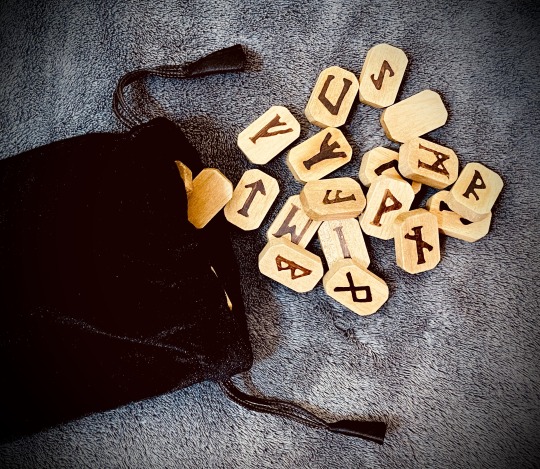
Why are runes effective?
Even before people adapted runes as a writing system, their ancestors have used these symbols as talismans, carving them into weapons and shields.
Simultaneously, they were used for communing with the old gods and determining their will.
How many runes are there?
Twenty four. As with tarot cards, each has associated messages. Also like tarot cards, they are read with reversals, except for several of them that look the same when reversed and therefore maintain their original meanings.
Recently, people added a 25th piece. A blank one they fondly call “Odin’s rune”. Its meaning is simply that the future is yet unwritten, and one can make any dream happen.
Which rune set should I get?
The very first ones were made of wood. In my family, we create our first set ourselves — we cut a branch into small pieces, and carve the symbols into them.
Nowadays, wooden runes have somewhat been overshadowed by runestones, which are made of crystals, because of New Agers’ belief in their powers.
Metal is another popular material. Because of its durability, this is the type I have in my charm set. For personal use, I prefer wooden ones.
Whichever set you purchase, it will come with a pouch.
How do I use them?
Step 1: Invoke your higher power or higher self, then ask a question.
Step 2: Shuffle the runes by mixing them inside their pouch.
Step 3: When you feel ready, grab a handful and cast them onto a surface.
Step 4: Interpret each rune alone, and then together, to get your answer.
You can also draw a rune one by one, and give them positions, as in a tarot spread. I personally never do this, because runes are meant to form themselves into a message. Giving them a spread would be restricting their freedom.
Or you can simply pull a single rune, as if you are doing a daily tarot draw.
Are they better than tarot?
Given that there are only 25 runes, while there are 78 tarot cards, of course the latter can give more detailed messages.
If you are only after meditation or reflection, runes would serve you well.
I use them with tarot. This way, I can benefit from the runes’ preciseness without forgoing tarot’s specificness. This is what I do in some of my Pick a Card readings.
What does each rune mean?
As with tarot cards, runes have a wealth of meanings. But these few keywords should be enough for beginners.
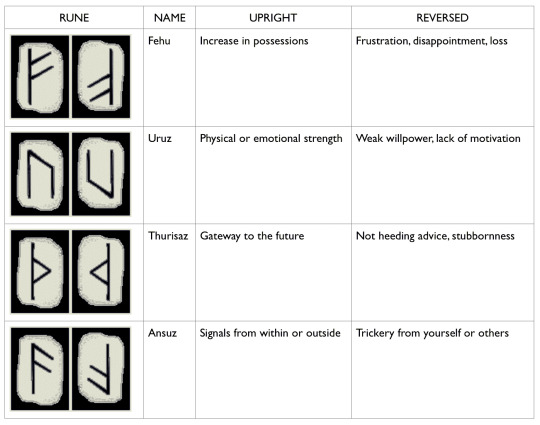
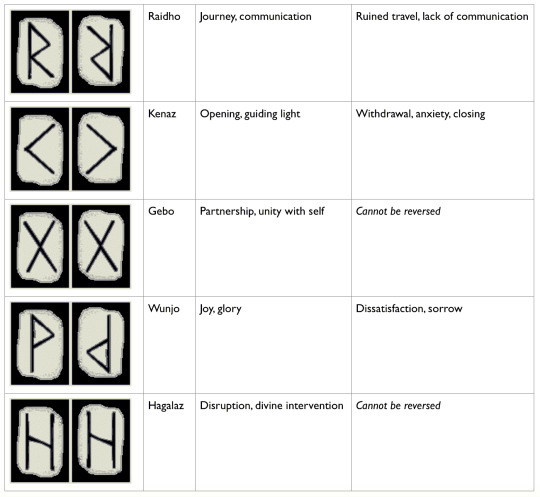
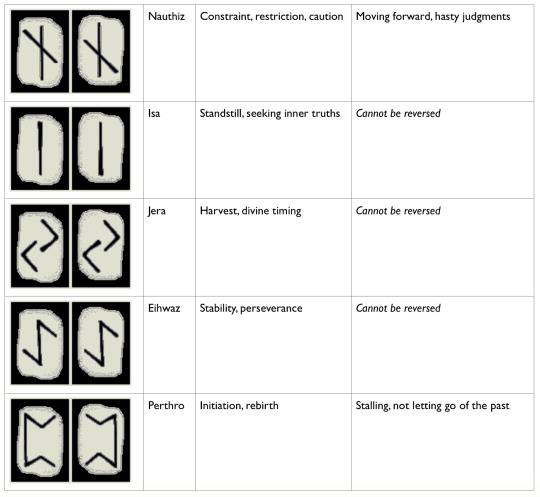
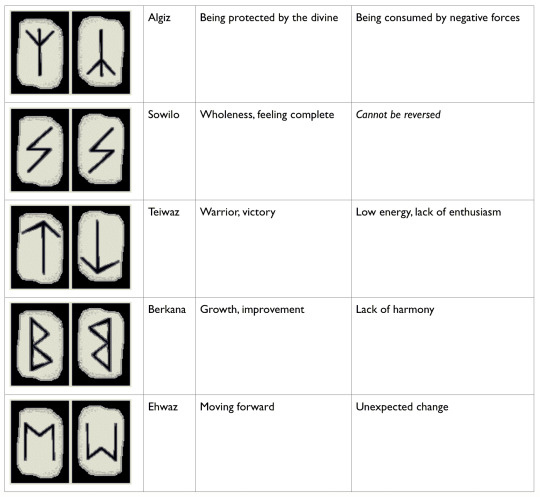


1K notes
·
View notes
Text
EYE OF NEWT, WOOL OF BAT... HERB CODE NAMES IN WITCHCRAFT
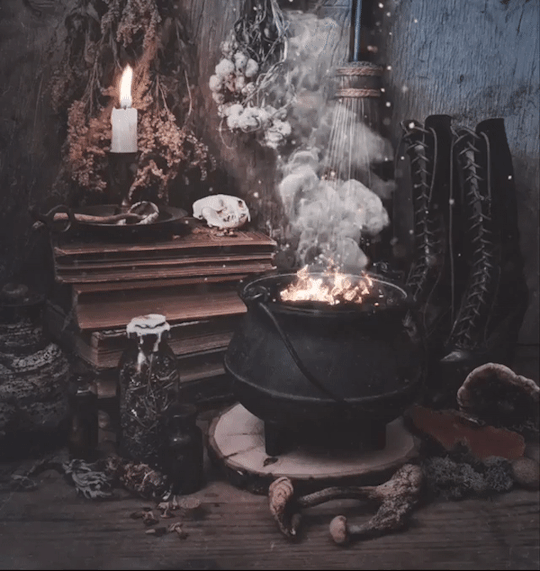
"Filet of fenny snake, In the cauldron boil and bake; Eye Of Newt, and Toe Of Frog, Wool Of Bat, and Tongue Of Dog, Adder's Fork, and Blind Worm's Sting, Lizard's Leg and Owlet's Wing. For a charm of powerful trouble, Like a hell-broth boil and bubble" - Second Witch, Act IV Scene I, William Shakespeare's Macbeth.
Though, Shakespeare was a master of manipulating words, he doesn't get credit for the macabre sounding ingredients in Macbeth's witches' brew. In fact, as long as mankind has been using plants for food and medicine, we have given them interesting folk names. Throughout history, commonly used plants and herbs have been given different names based on certain attributes of the plant, it's growth habits or even specific reasons it was used for. Common dandelion has been called bitterwort, for it's strong and bitter taste, blowball and puffball because of it's seeding habits, lion's tooth for it's deeply serrated foliage and piss-in-the-bed because of it's diuretic properties. Depending on where you live, you may call Glechoma hederacea creeping charlie or ground ivy; it's also gone by gill over the ground, runaway robin, and lizzie run up the hedge because of it's aggressive runners, cat's foot for the shape of it's leaves, alehoof because it was commonly used in the making of beer and ale, and field balm because it has been used for as a general heal-all herb for balms, salves and teas for thousands of years.
Witches were specifically careful to guard their herbal secrets. They came up with odd and grisly sounding folk names for the plants they regularly used, like eye of newt for mustard seed or wool of bat for moss. Many historians believe that witches used these gruesome sounding names so that their spells and herbal remedies could not be easily copied. Back in Shakespearean times, those who were labeled as witches were usually herbalist, midwives and healers; their livelihood often depended on their knowledge of herbs and their uses. Therefore they created secret code names for the plants they used.
In some cases certain body parts were used as code for the part of the plant used in a spell or herbal remedy. For example, "eye of…" would usually refer to a round shaped blossom or seed of a specific plant; as in eye of newt, which is simply mustard seed. In some cases, an animal name was used in place of a plant name, just like the "newt" would represent mustard plant in eye of newt. Below I've listed some of the common body parts in witchy plant names and their meaning, as well as commonly used animal code names.
BODY PARTS AS PLANT PARTS
Eye- Blossom or Seed
Heart- Bud or Seed
Beak, Bill or Nose- Seed, Bud or Bloom
Tongue or Teeth- Petal or Leaf
Head- Blossom
Tail- Stem
Hair- Dried Herbs or Stringy Parts Of Herbs
Privates, Genitals Or Semen- Seeds Or Sap
Blood-Sap
Guts- Roots or Stalk
Paw, Foot, Leg, Wing or Toe- Leaves
PLANT NAMES AS ANIMALS
Toad- Sage
Cat- Catmint
Dog- Grasses, Specifically Couchgrass
Frog- Cinquefoil
Eagle- Wild Garlic
Blue Jay- Laurel
Hawk- Hawkweed
Lamb-Wild Lettuce
Nightingale- Hops
Rat- Valerian
Weasel- Rue
Woodpecker- Peony
Secret codes among witches and herbalists
There are many other animal/plant associations, and even associations to gods and mythological beings, that were used as plant code names. Like folk names, witchy plant names would have changed by region and era. By combining a body part and an animal from simple lists like these as a code, a witch or herbalist could keep the ingredients of their spell or remedy secret. For example a witch who wanted to sell her herbs might list the ingredients of a tea for insomnia as rat guts and blood of lamb, instead of just valerian root and wild lettuce sap. This would not only prevent the customer from just growing their own valerian (which is actually heliotrope) and wild lettuce, but it also had a much more official witchy sound. Even though these names were crude and sometimes vile, they made the healer sound more legit and gave the tired consumer confidence that they finally found the one magical cure.
Some of these names are still in use today!
These days, there are many almanacs of magical herbs and herbal grimmoires available online or at bookstores, that list out Witch Herb/Plant names and even details their uses. Just for fun, I will leave you with a list of some of my favorite witchy plant names.
Ass' Ear- Comfrey
Bat's Wing- Holly Leaves
Beard Of Monk- Chicory
Bear's Foot- Lady's Mantle
Bird's Eye- Germander or Speedwell
Blind Eyes- Poppy
Blood From A Head- Lupine
Blood Of Ares- Purslane
Blood Of Hestia- Chamomile
Bloody Fingers- Foxglove
Calf's Snout- Snapdragon
Cat's Foot- Ground Ivy
Crow's Foot- Wood Anemone
Devil's Ear- Jack In The Pulpit
Devil's Plaything- Yarrow
Dew Of The Sea- Rosemary
Dog's Mouth- Snapdragon
Dragon's Teeth- Vervain
Elf Leaf- Lavender
Englishman's Foot- Common Plaintain
Fairy Eggs- Nutmeg
Flower Of Death- Vinca
Goose Tongue- Lemon Balm
Graveyard Dust- Mullein
Hawk's Heart- Wormwood
Juno's Tears- Vervain
Jupiter's Beard- Sempervivums
Lion's Foot- Lady's Mantle
Little Faces- Viola
Man's Bile- Turnip Sap
Mortification Root- Rose Of Sharon
Nose Of Turtle- Turtlehead, Chelone
Nosebleed- Yarrow
Our Lady's Tears- Lily Of The Valley
Old Man's Flannel- Mullein
Ram's Head- Valerian
Scale Of Dragon- Tarragon
Semen Of Ares- White Clover
Semen Of Hermes- Dill
Serpent's Tongue- Dog's Tooth Violet
Sparrow's Tongue- Knotweed
Tree Of Doom- Elder
Unicorn Root- Boneset
Weasel Snout- Yellow Archangel
Wool Of Bat- Moss
1K notes
·
View notes
Text
Unconventional Witchcraft Tools:
🦴 Bones:
It is essential to find animal bones in an ethically sourced manner. Bones have been apart of us and magic itself always. These rigid organs are used in forms of offerings, animism, grounding, cleromancy, and osteomancy.
💍 Charms:
Very dependent on the shape of the charm, many practitioners adorn their magical possessions with charms. (I.e a heart charm in a sachet representing romance.) From ancient Europe to Asia, jewelry and charms were tossed from baskets onto a soft surface for divination. There is also a process called charming, which is imbuing an object with a particular energy.
⚰️ Coffin Nails:
Coffin Nails are utilized in witchcraft for warding, mourning, baneful magic, and death work in general. Coffin Nails represent the security of one’s physical body, as it seals us off from danger.
🪙 Coins:
Coins are utilized as offerings, charms, runes, and ways to honor deities and ancestors. Coins are also added to money bowls. Coins represent Fortune and Wealth.
🪶 Feathers:
Each Bird has a different magical significance, so the magical properties of a bird can be both interpreted from that as well as Color Magic. Feathers themselves embody the element of Air and are great for Cleansing.
🐴 Horseshoes:
Horseshoes have been hung over doorways for at least a few centuries. This tradition not only attracts luck and fortune, but wards your space from negative energy.
🔨 Iron Pikes:
Iron Pikes come from the railroads that trains run across. These Iron Pikes are often already rusted, and imbued with the intentions of protection and warding.
🗝 Keys:
Old keys have been used by many and have unlocked doors many times. Each time you use a key, visualize you unlocking and harnessing potential opportunity, closure, openings, journeys, protection, safety, warding, and security.
🍁 Leaves:
Leaves magically represent growth, transformation, nourishment, change, development, and can be used to draw sigils upon.
🪴 Seeds:
Seeds not only magically symbolize fertility, but potential, growth, wealth transformation, and fortune. One can use Nuts, Seeds, or Acorns in wealth, luck, and growth spells, or as a charm.
🐚 Shells:
Cowrie shells were once one of the most common forms of global currency. African traditions use Cowrie Shells for Divinatory purposes since Ancient times. Shells embody fertility, sensuality, wealth, life, and spirit.
🪵 Sticks:
Sticks not only embody the Earth, but can be used for Wands, Besoms, Crafts, or in place of bones in Osteomancy. You can use any kind of wood you like including cinnamon and driftwood.
🪨 Stones:
The gorgeous and delicate simplicity of one of the Earth’s greatest forms of matter not only provides grounding energy, but can be used and imbued for many other purposes as well.
2K notes
·
View notes
Text
What if my spell doesn't work?
This is a list of things to check whenever your spellwork doesn't get you the outcome you wanted.
Timing of when you did the spell (What moon phase/star sign was it? Were you tired? Was it too close to when you needed the results?)
Ingredients you used (Were they the strongest you could have used? Do any ingredients counteract others?)
Manifestation wording (Were you too vague? Too specific?)
Intention (Did you set intention before working?)
Shadow work (Have you been doing it? Is there something you need to address before receiving what you asked for?)
Problem solving (Is this something you are meant to develop without the use of magic? Do your spirit guides want you to try a different way?)
Hope this helps! All practitioners will have spells or manifestations that don't come through the way they hoped, so try not to let yourself get discouraged if/when this happens to you!
164 notes
·
View notes
